Farhad Bin Siddique
Nora: The Well-Being Coach
Jun 01, 2021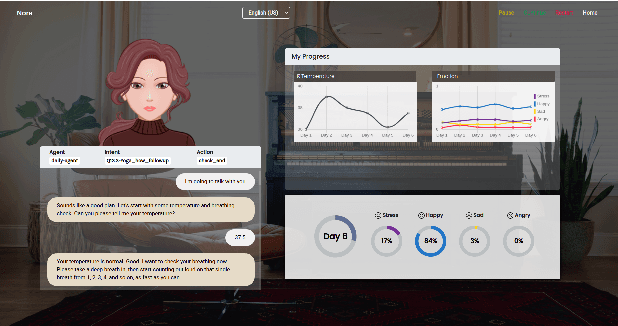

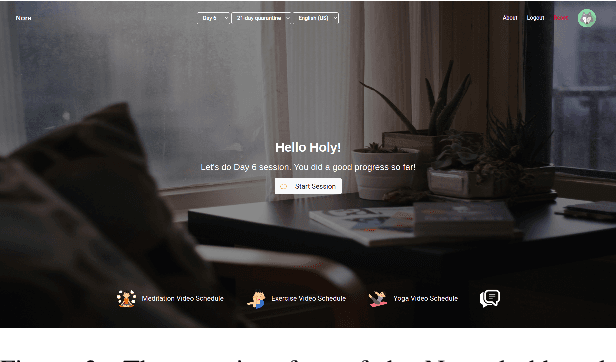
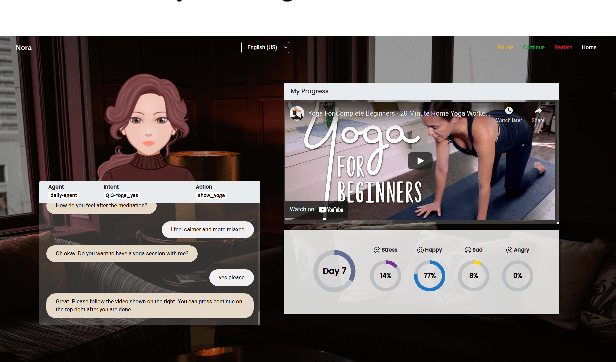
Abstract:The current pandemic has forced people globally to remain in isolation and practice social distancing, which creates the need for a system to combat the resulting loneliness and negative emotions. In this paper we propose Nora, a virtual coaching platform designed to utilize natural language understanding in its dialogue system and suggest other recommendations based on user interactions. It is intended to provide assistance and companionship to people undergoing self-quarantine or work-from-home routines. Nora helps users gauge their well-being by detecting and recording the user's emotion, sentiment, and stress. Nora also recommends various workout, meditation, or yoga exercises to users in support of developing a healthy daily routine. In addition, we provide a social community inside Nora, where users can connect and share their experiences with others undergoing a similar isolation procedure. Nora can be accessed from anywhere via a web link and has support for both English and Mandarin.
CAiRE-COVID: A Question Answering and Multi-Document Summarization System for COVID-19 Research
May 04, 2020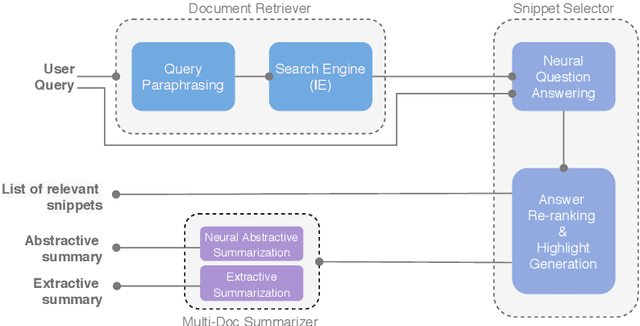
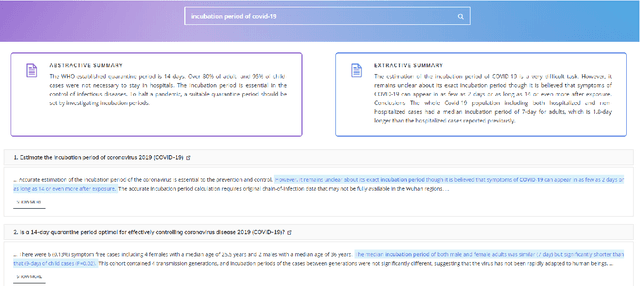
Abstract:To address the need for refined information in COVID-19 pandemic, we propose a deep learning-based system that uses state-of-the-art natural language processing (NLP) question answering (QA) techniques combined with summarization for mining the available scientific literature. Our system leverages the Information Retrieval (IR) system and QA models to extract relevant snippets from the existing literature given a query. Fluent summaries are also provided to help understand the content in a more efficient way. In this paper, we describe our CAiRE-COVID system architecture and methodology for building the system. To bootstrap the further study, the code for our system is available at https://github.com/HLTCHKUST/CAiRE-COVID
GlobalTrait: Personality Alignment of Multilingual Word Embeddings
Nov 01, 2018

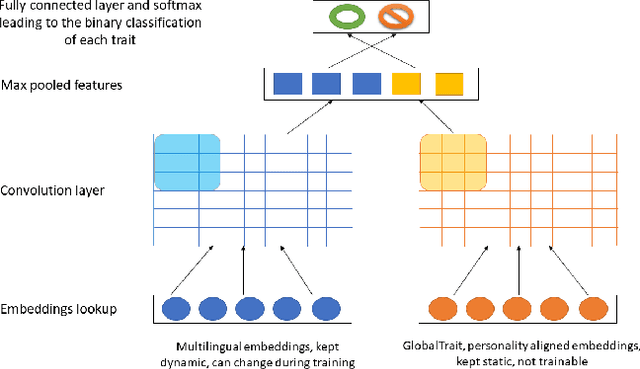

Abstract:We propose a multilingual model to recognize Big Five Personality traits from text data in four different languages: English, Spanish, Dutch and Italian. Our analysis shows that words having a similar semantic meaning in different languages do not necessarily correspond to the same personality traits. Therefore, we propose a personality alignment method, GlobalTrait, which has a mapping for each trait from the source language to the target language (English), such that words that correlate positively to each trait are close together in the multilingual vector space. Using these aligned embeddings for training, we can transfer personality related training features from high-resource languages such as English to other low-resource languages, and get better multilingual results, when compared to using simple monolingual and unaligned multilingual embeddings. We achieve an average F-score increase (across all three languages except English) from 65 to 73.4 (+8.4), when comparing our monolingual model to multilingual using CNN with personality aligned embeddings. We also show relatively good performance in the regression tasks, and better classification results when evaluating our model on a separate Chinese dataset.
Towards Empathetic Human-Robot Interactions
May 13, 2016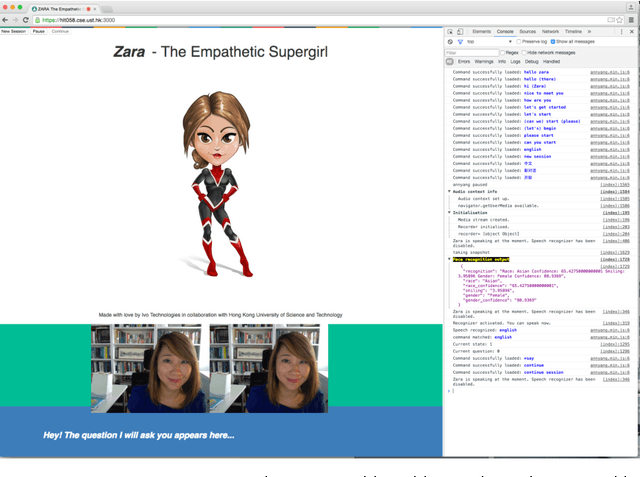
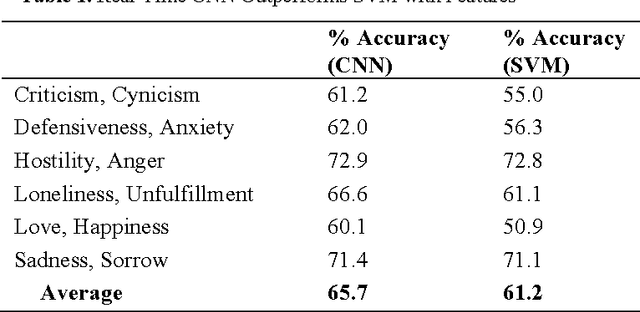
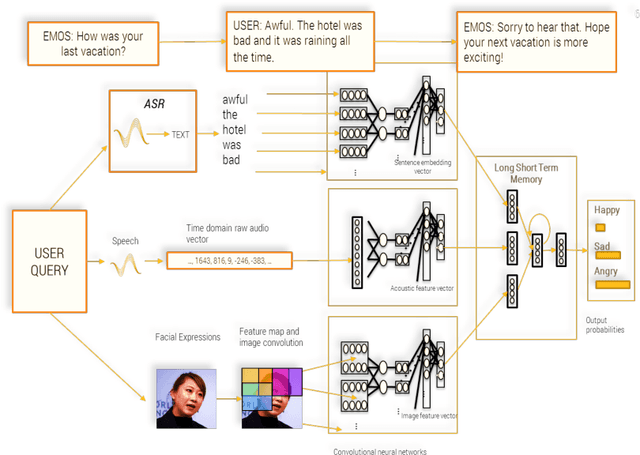

Abstract:Since the late 1990s when speech companies began providing their customer-service software in the market, people have gotten used to speaking to machines. As people interact more often with voice and gesture controlled machines, they expect the machines to recognize different emotions, and understand other high level communication features such as humor, sarcasm and intention. In order to make such communication possible, the machines need an empathy module in them which can extract emotions from human speech and behavior and can decide the correct response of the robot. Although research on empathetic robots is still in the early stage, we described our approach using signal processing techniques, sentiment analysis and machine learning algorithms to make robots that can "understand" human emotion. We propose Zara the Supergirl as a prototype system of empathetic robots. It is a software based virtual android, with an animated cartoon character to present itself on the screen. She will get "smarter" and more empathetic through its deep learning algorithms, and by gathering more data and learning from it. In this paper, we present our work so far in the areas of deep learning of emotion and sentiment recognition, as well as humor recognition. We hope to explore the future direction of android development and how it can help improve people's lives.
 Add to Chrome
Add to Chrome Add to Firefox
Add to Firefox Add to Edge
Add to Edge